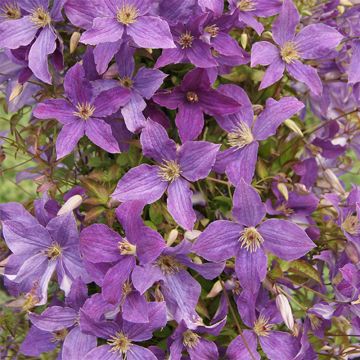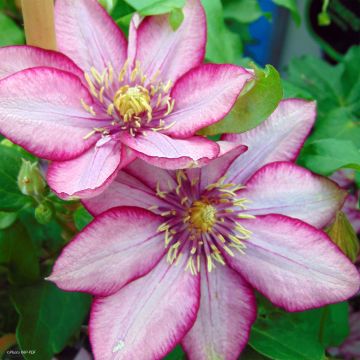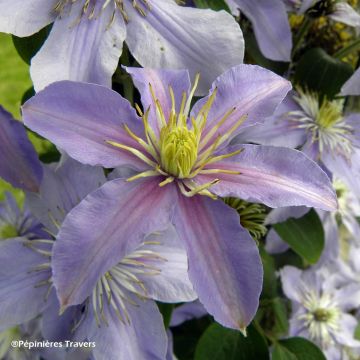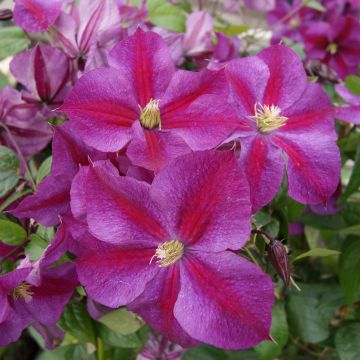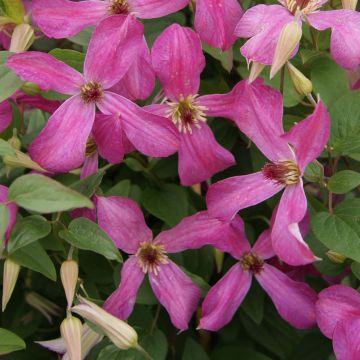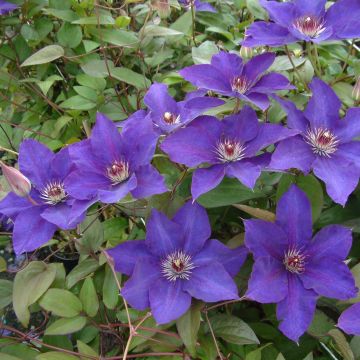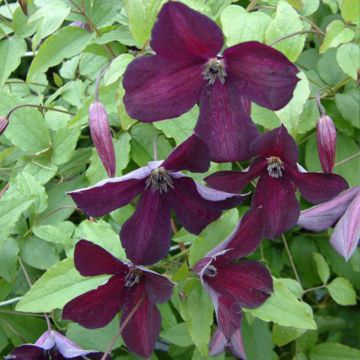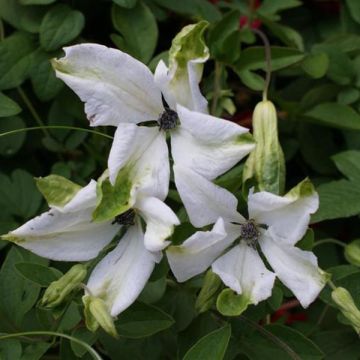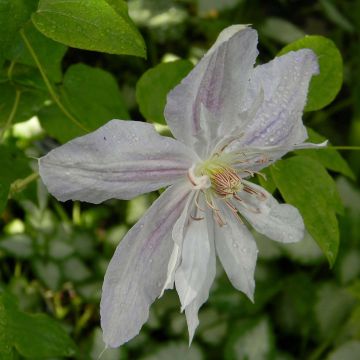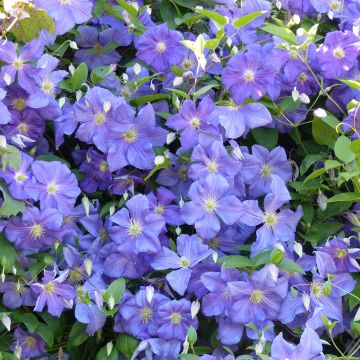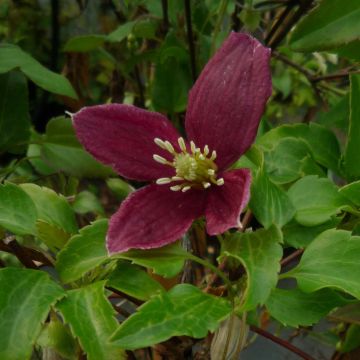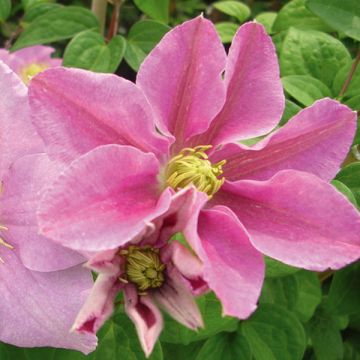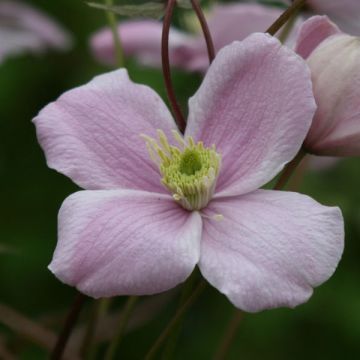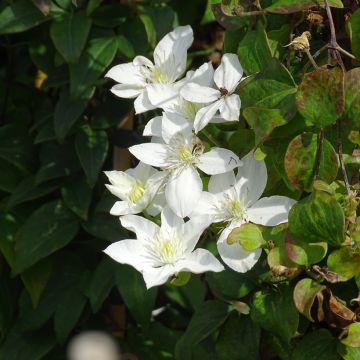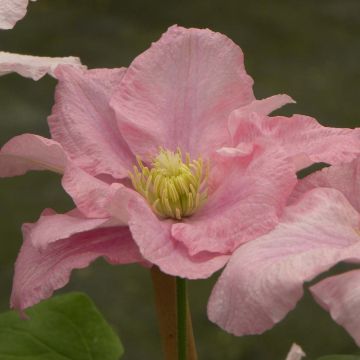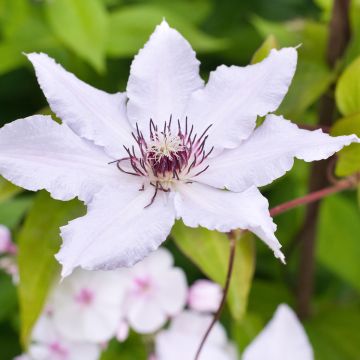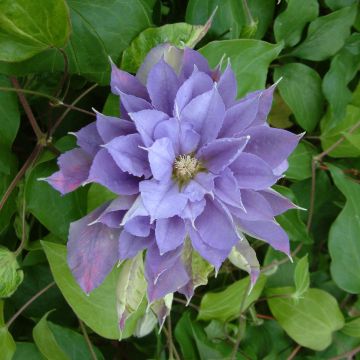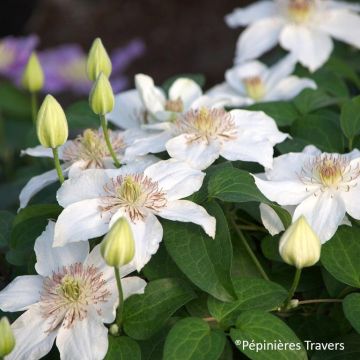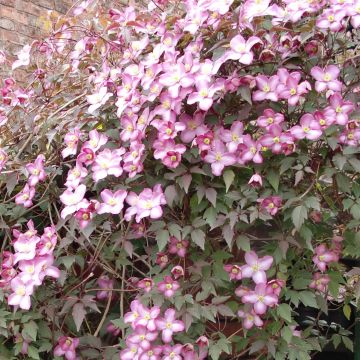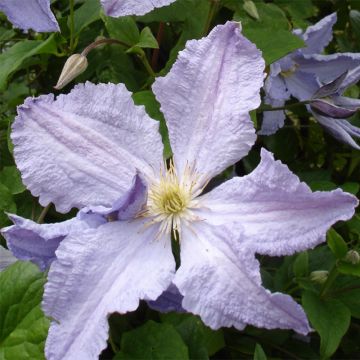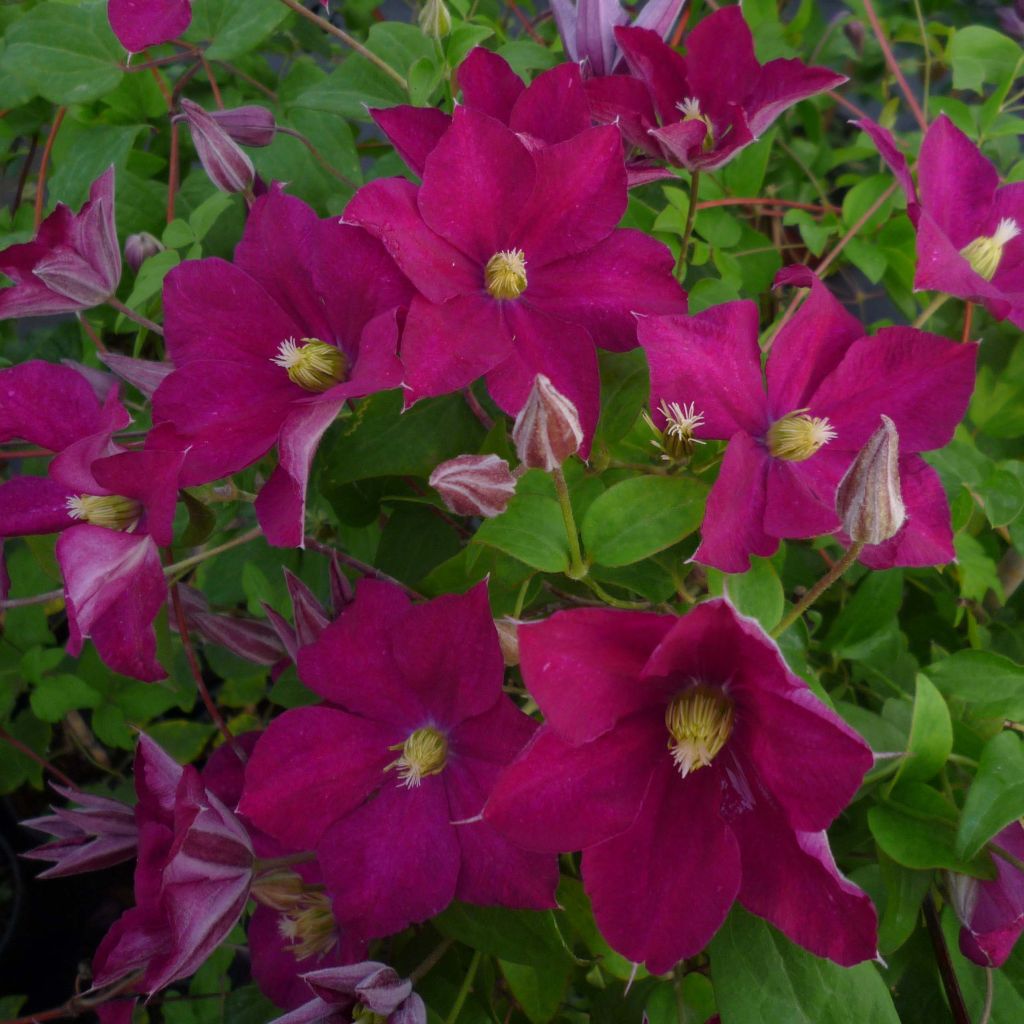

Clematis jackmanii Madame Edouard André
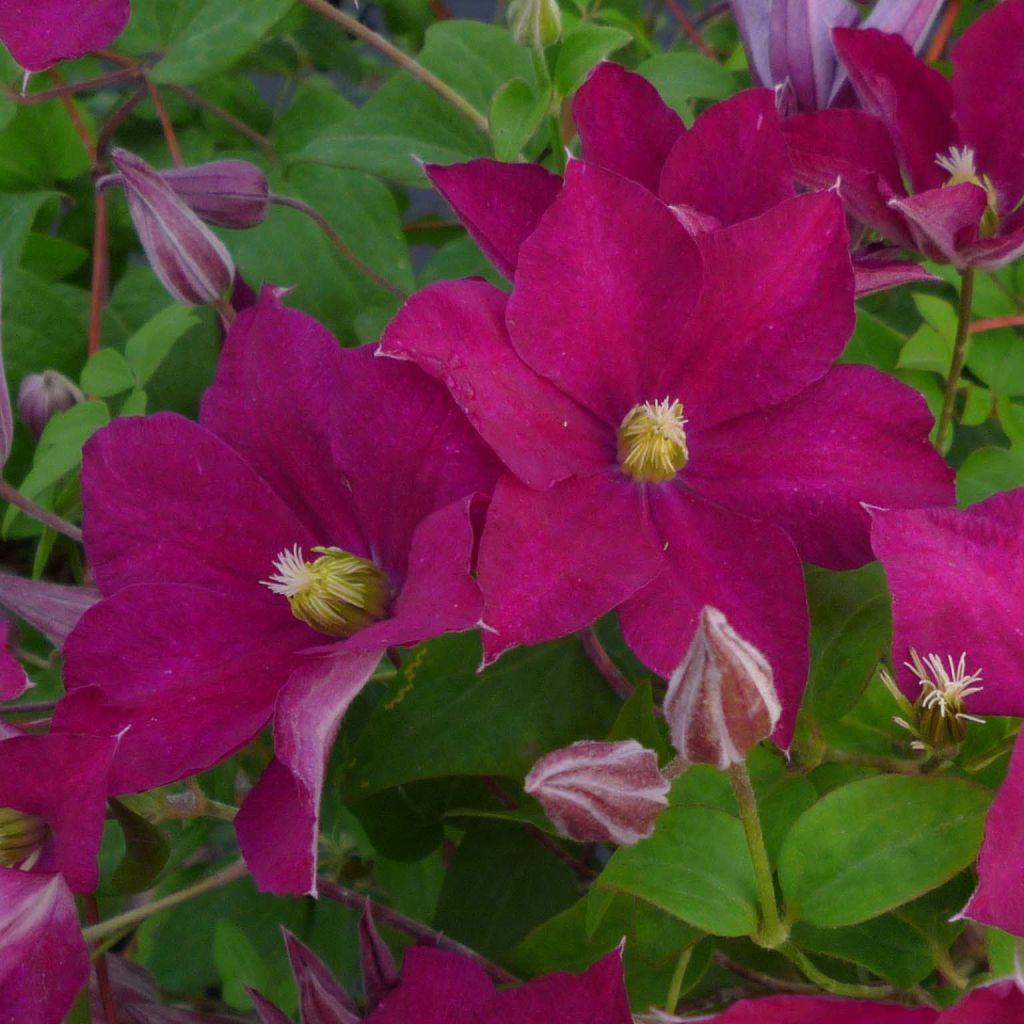

Clematis jackmanii Madame Edouard André
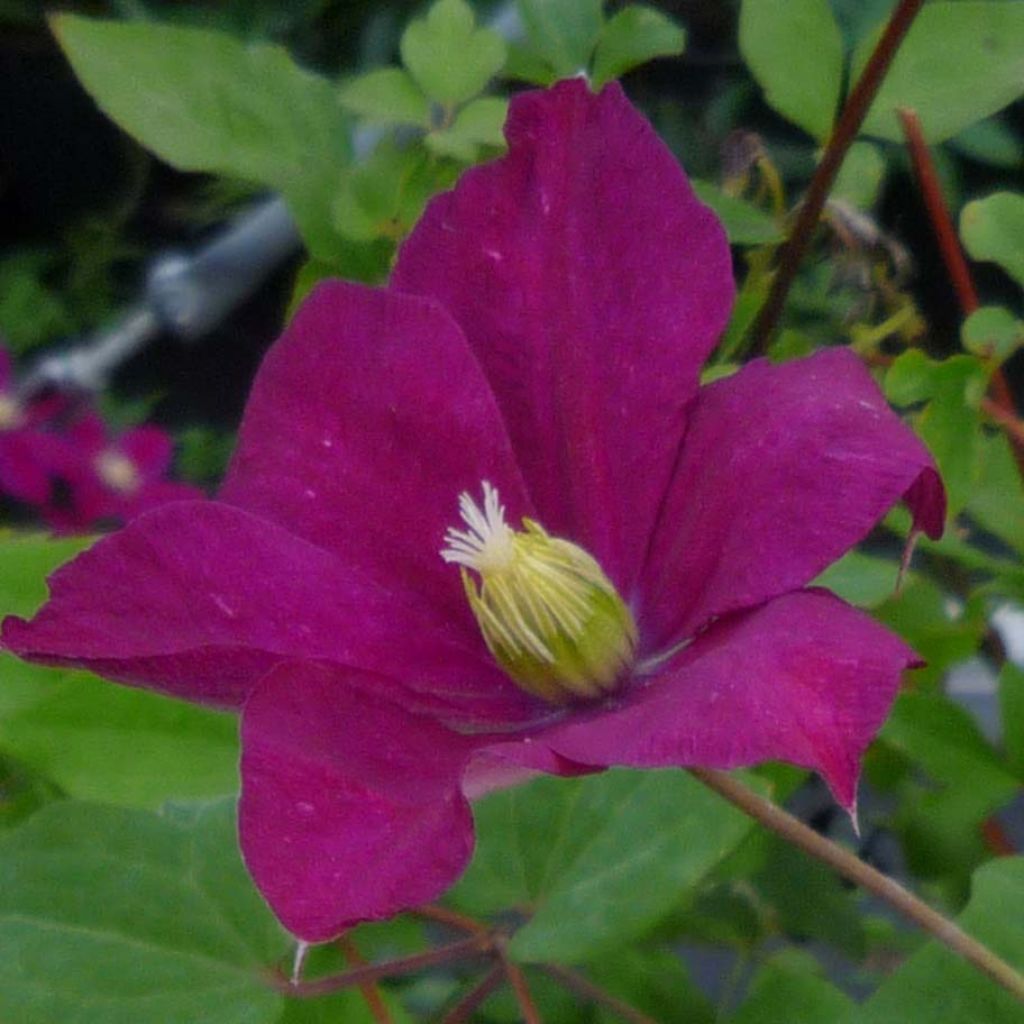

Clematis jackmanii Madame Edouard André
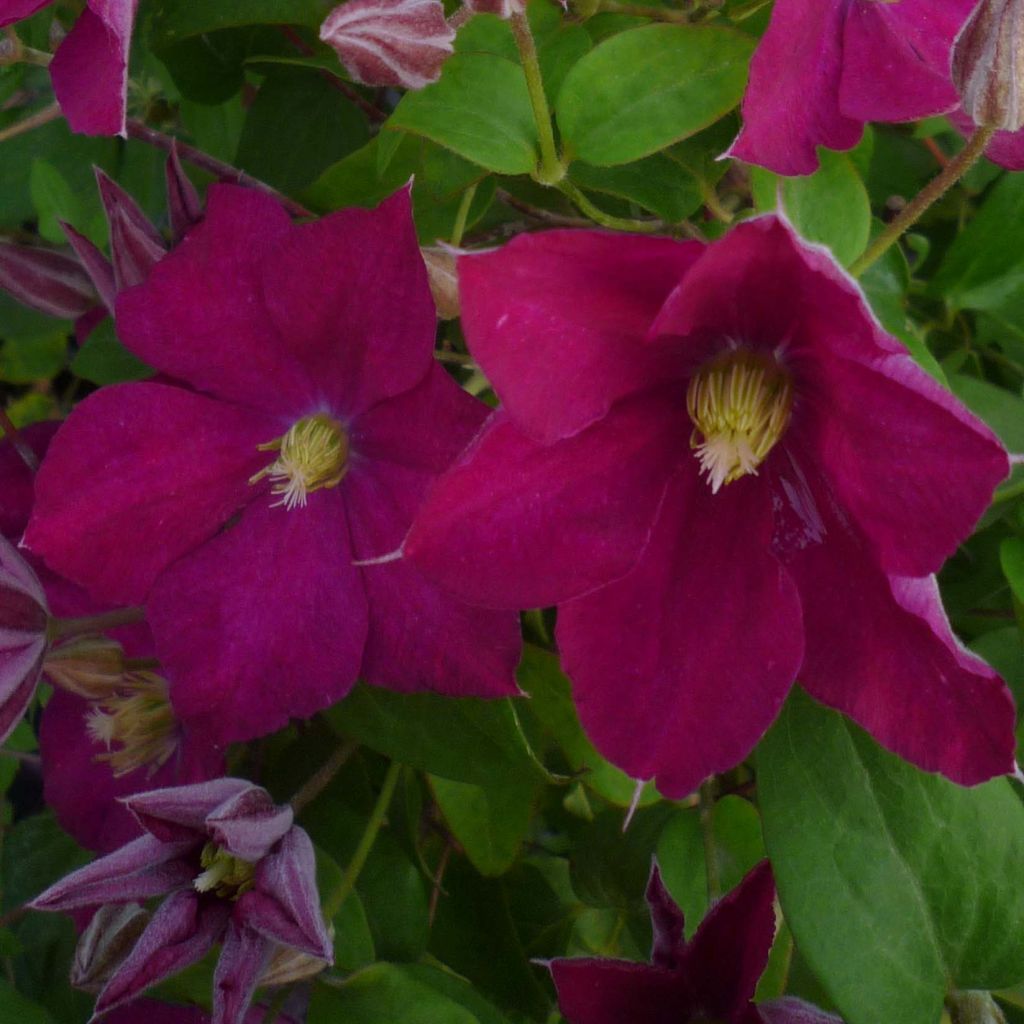

Clematis jackmanii Madame Edouard André
Clematis jackmanii Madame Edouard André
Clematis jackmanii Madame Edouard André
Jackman's Clematis
This item cannot be shipped to the selected country
Delivery charge from €5.90
More information
Schedule delivery date,
and select date in basket
This plant carries a 6 months recovery warranty
More information
We guarantee the quality of our plants for a full growing cycle, and will replace at our expense any plant that fails to recover under normal climatic and planting conditions.
From €5.90 for pickup delivery and €6.90 for home delivery
Express home delivery from €8.90.
Does this plant fit my garden?
Set up your Plantfit profile →
Description
The Clematis Madame Edouard André is an old French variety derived from the excellent Clematis jackmanii. It is a particularly floriferous variety, of modest size and easy to grow. Its upright habit showcases throughout the summer an abundance of beautiful single flowers, striking, with petals of a rich red colour with magenta and burgundy reflections, sometimes sprinkled with white. We are dealing here with an excellent Clematis with spectacular and shimmering flowering, which will generously and gracefully invade any support in the garden, but also the terrace or balcony, when planted in a pot.
The Clematis Madame Edouard André is a French horticultural creation from the 19th century, credited to a certain Mr. Vieillard. It has inherited from C.jackmanii its floribundity and robustness. All these plants belong to the Ranunculaceae family. It belongs to group 3, the Clematis with large flowers that bloom throughout the summer on the current year's shoots. Clematis attach themselves to their support through petioles transformed into tendrils. 'Madame Edouard André' is a climbing plant with a woody base, well bushy with deciduous foliage. Fast-growing and vigorous, it can climb up to 2 or 3 meters (7 or 10 feet) in height, with a spread of 1 meter (3 feet) to 1.50 meters (5 feet) approximately. This superb cultivar, particularly floriferous, covers its foliage, from June to September, with magnificent single star-shaped flowers with 6 petals, measuring 10 to 12 cm (4 to 5in) in diameter. Its foliage almost disappears under the avalanche of its velvety flowers, a deep red, with a slightly pink band in the center, randomly speckled with white. In the center and in contrast, a beautiful cream-coloured stamen heart is displayed. An abundant and very bright flowering, with a brilliant colour harmony!
Summer-flowering Clematis, quintessential climbing plants (without ever being invasive or cumbersome), can be staged in a thousand and one ways. Emblematic plants of English gardens, Clematis offer a romantic, natural, and wild touch to the garden. They will be perfect companions for non-remontant climbing roses. Ideal for decorating walls, trellises, pergolas, arches, fences, they will also be spectacular when planted in trees and shrubs, or in hedges, to accompany their flowering, relay it, or bring colour to their foliage. Clematis are also excellent candidates for container cultivation, to animate a balcony, terrace, or patio, if a support is provided. It is advisable to avoid too hot locations, both in pots and in the ground. The Madame Edouard André Jackmanii variety will be beautiful when associated with a white or pink climbing rose, a Japanese Maple, a Bamboo, a Ceanothus, a Hibiscus, a Wisteria, or a Chinese Lilac. Medium-height perennials will shade its base, such as an Epimedium, a Daylily, a Hellebore, an Iris, or a Phlox.
Report an error about the product description
Clematis jackmanii Madame Edouard André in pictures
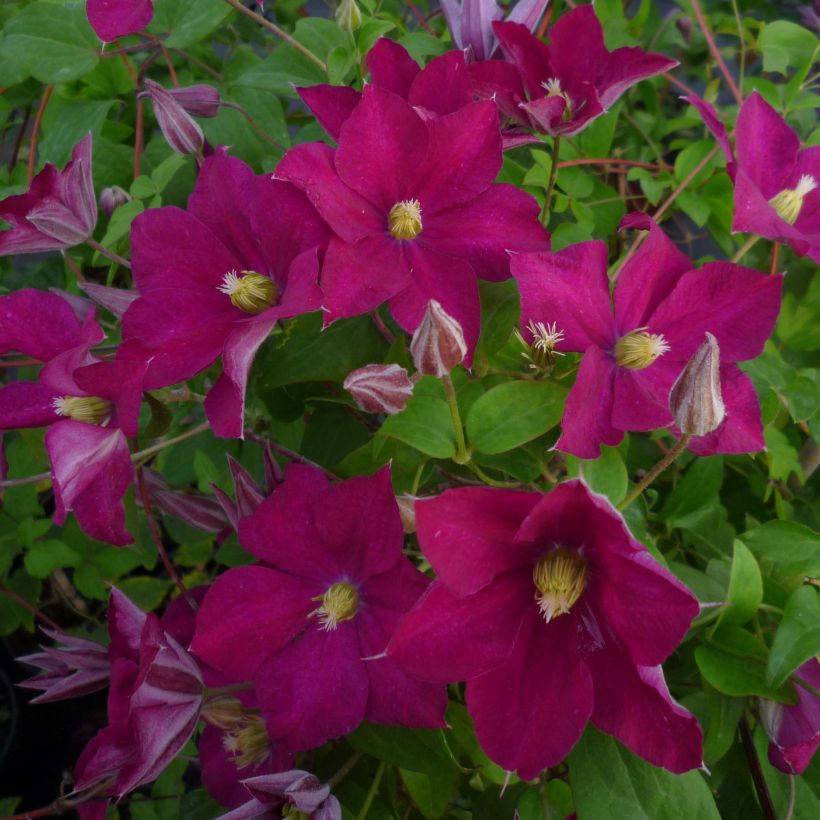

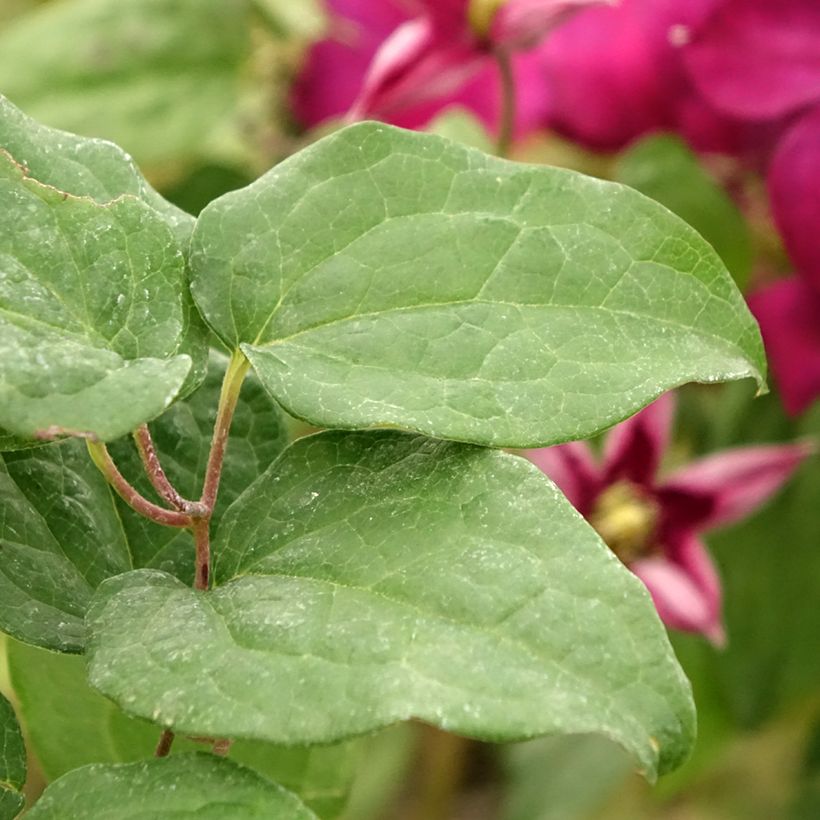

Plant habit
Flowering
Foliage
Botanical data
Clematis
jackmanii
Madame Edouard André
Ranunculaceae
Jackman's Clematis
Cultivar or hybrid
Other Clematis Viticella
Planting and care
The Clematis Madame Edouard André is a perfectly hardy and robust variety. It enjoys a sunny, or even partially shaded, exposure, as well as a fertile, humus-rich, moist and well-drained soil. Clematises like to rise towards the sun, with their base in the shade. It is therefore absolutely essential that the base of its stem and its roots be in the shade. For this, a flat tile tilted will provide the necessary shade. Similarly, a bushy perennial plant or a low-growing bush planted in front of the Clematis will also provide perfect protection against the sun, while attractively concealing the Clematis's stump. When planting, take precautions when handling the root ball as Clematis roots are quite fragile. It will be important to work the soil deeply and incorporate compost as well as a handful of bone meal or dried blood, a base fertilizer that will benefit the Clematis's recovery. During the first few weeks after planting, regular but moderate watering will be necessary to keep the soil consistently moist. The main enemy of the Clematis is moisture, so the soil should never be waterlogged. Indeed, overly wet soil can cause the wilting of its stems and leaves, often fatally. The Clematis plant will be placed in the hole at an inclined position, with the stem oriented towards the support on which it will climb. Cover with soil, forming a small mound to fully cover the base and stem of the Clematis in order to reduce the risk of wilting, and also to promote the emergence of vigorous shoots from the stump. After planting, cut back the stems of summer-flowering Clematises to 30 cm (12in) or 40 cm (16in) above the ground, just above a nice pair of buds. Train the stems without squeezing them until the plant grips onto the support by itself, thanks to its voluble petioles. Mulch the Clematises in February with garden compost or well-rotted manure, avoiding direct contact with the stems.
Planting period
Intended location
Care
-
, onOrder confirmed
Reply from on Promesse de fleurs
Clematis
Haven't found what you were looking for?
Hardiness is the lowest winter temperature a plant can endure without suffering serious damage or even dying. However, hardiness is affected by location (a sheltered area, such as a patio), protection (winter cover) and soil type (hardiness is improved by well-drained soil).

Photo Sharing Terms & Conditions
In order to encourage gardeners to interact and share their experiences, Promesse de fleurs offers various media enabling content to be uploaded onto its Site - in particular via the ‘Photo sharing’ module.
The User agrees to refrain from:
- Posting any content that is illegal, prejudicial, insulting, racist, inciteful to hatred, revisionist, contrary to public decency, that infringes on privacy or on the privacy rights of third parties, in particular the publicity rights of persons and goods, intellectual property rights, or the right to privacy.
- Submitting content on behalf of a third party;
- Impersonate the identity of a third party and/or publish any personal information about a third party;
In general, the User undertakes to refrain from any unethical behaviour.
All Content (in particular text, comments, files, images, photos, videos, creative works, etc.), which may be subject to property or intellectual property rights, image or other private rights, shall remain the property of the User, subject to the limited rights granted by the terms of the licence granted by Promesse de fleurs as stated below. Users are at liberty to publish or not to publish such Content on the Site, notably via the ‘Photo Sharing’ facility, and accept that this Content shall be made public and freely accessible, notably on the Internet.
Users further acknowledge, undertake to have ,and guarantee that they hold all necessary rights and permissions to publish such material on the Site, in particular with regard to the legislation in force pertaining to any privacy, property, intellectual property, image, or contractual rights, or rights of any other nature. By publishing such Content on the Site, Users acknowledge accepting full liability as publishers of the Content within the meaning of the law, and grant Promesse de fleurs, free of charge, an inclusive, worldwide licence for the said Content for the entire duration of its publication, including all reproduction, representation, up/downloading, displaying, performing, transmission, and storage rights.
Users also grant permission for their name to be linked to the Content and accept that this link may not always be made available.
By engaging in posting material, Users consent to their Content becoming automatically accessible on the Internet, in particular on other sites and/or blogs and/or web pages of the Promesse de fleurs site, including in particular social pages and the Promesse de fleurs catalogue.
Users may secure the removal of entrusted content free of charge by issuing a simple request via our contact form.
The flowering period indicated on our website applies to countries and regions located in USDA zone 8 (France, the United Kingdom, Ireland, the Netherlands, etc.)
It will vary according to where you live:
- In zones 9 to 10 (Italy, Spain, Greece, etc.), flowering will occur about 2 to 4 weeks earlier.
- In zones 6 to 7 (Germany, Poland, Slovenia, and lower mountainous regions), flowering will be delayed by 2 to 3 weeks.
- In zone 5 (Central Europe, Scandinavia), blooming will be delayed by 3 to 5 weeks.
In temperate climates, pruning of spring-flowering shrubs (forsythia, spireas, etc.) should be done just after flowering.
Pruning of summer-flowering shrubs (Indian Lilac, Perovskia, etc.) can be done in winter or spring.
In cold regions as well as with frost-sensitive plants, avoid pruning too early when severe frosts may still occur.
The planting period indicated on our website applies to countries and regions located in USDA zone 8 (France, United Kingdom, Ireland, Netherlands).
It will vary according to where you live:
- In Mediterranean zones (Marseille, Madrid, Milan, etc.), autumn and winter are the best planting periods.
- In continental zones (Strasbourg, Munich, Vienna, etc.), delay planting by 2 to 3 weeks in spring and bring it forward by 2 to 4 weeks in autumn.
- In mountainous regions (the Alps, Pyrenees, Carpathians, etc.), it is best to plant in late spring (May-June) or late summer (August-September).
The harvesting period indicated on our website applies to countries and regions in USDA zone 8 (France, England, Ireland, the Netherlands).
In colder areas (Scandinavia, Poland, Austria...) fruit and vegetable harvests are likely to be delayed by 3-4 weeks.
In warmer areas (Italy, Spain, Greece, etc.), harvesting will probably take place earlier, depending on weather conditions.
The sowing periods indicated on our website apply to countries and regions within USDA Zone 8 (France, UK, Ireland, Netherlands).
In colder areas (Scandinavia, Poland, Austria...), delay any outdoor sowing by 3-4 weeks, or sow under glass.
In warmer climes (Italy, Spain, Greece, etc.), bring outdoor sowing forward by a few weeks.

































